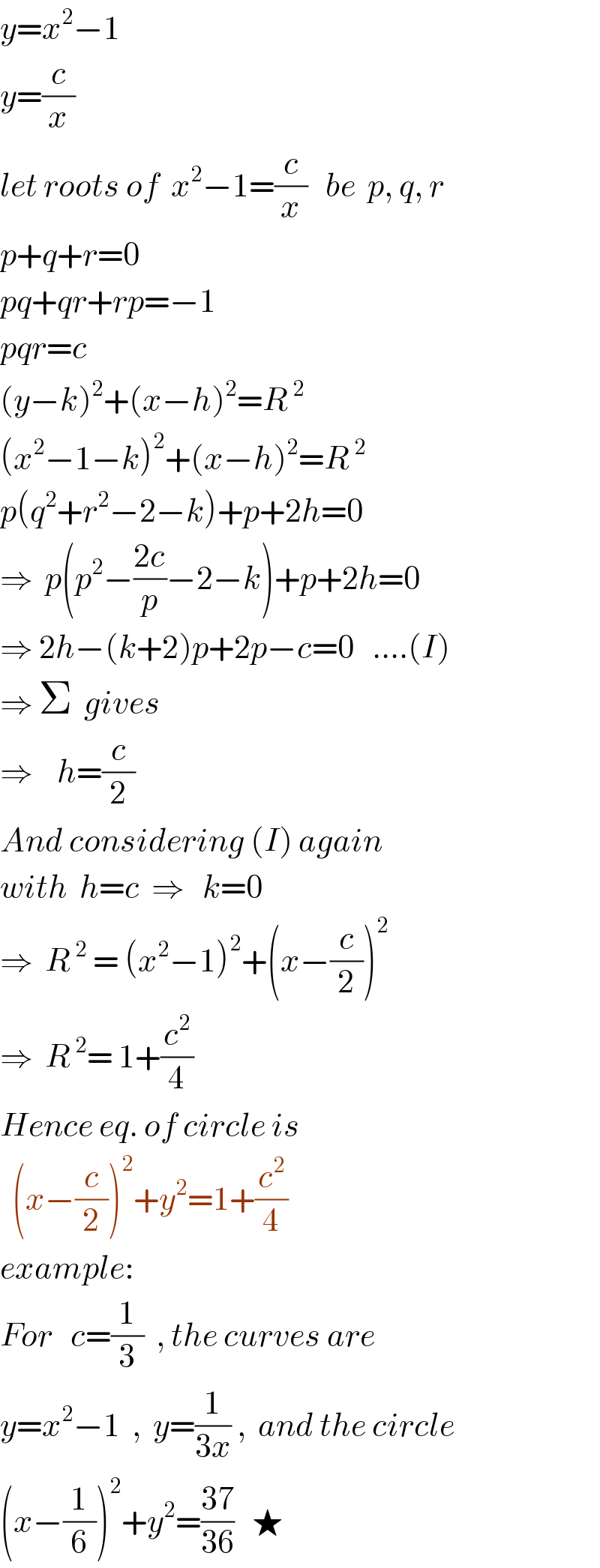
Question and Answers Forum
Question Number 124740 by ajfour last updated on 05/Dec/20

Commented by ajfour last updated on 05/Dec/20

Answered by ajfour last updated on 05/Dec/20

Commented by ajfour last updated on 05/Dec/20

Commented by mr W last updated on 05/Dec/20

Commented by ajfour last updated on 06/Dec/20

